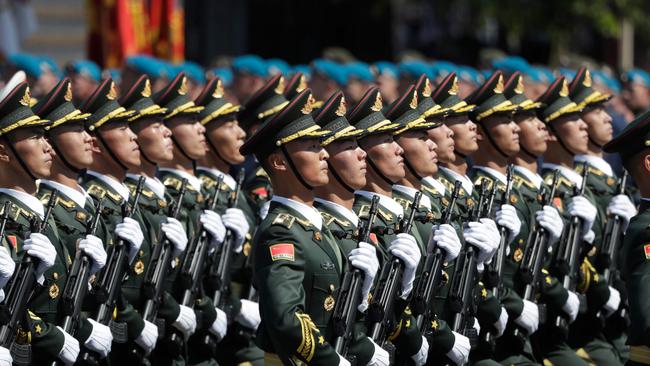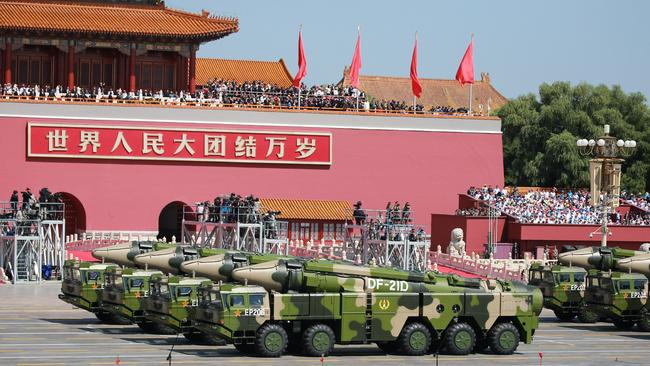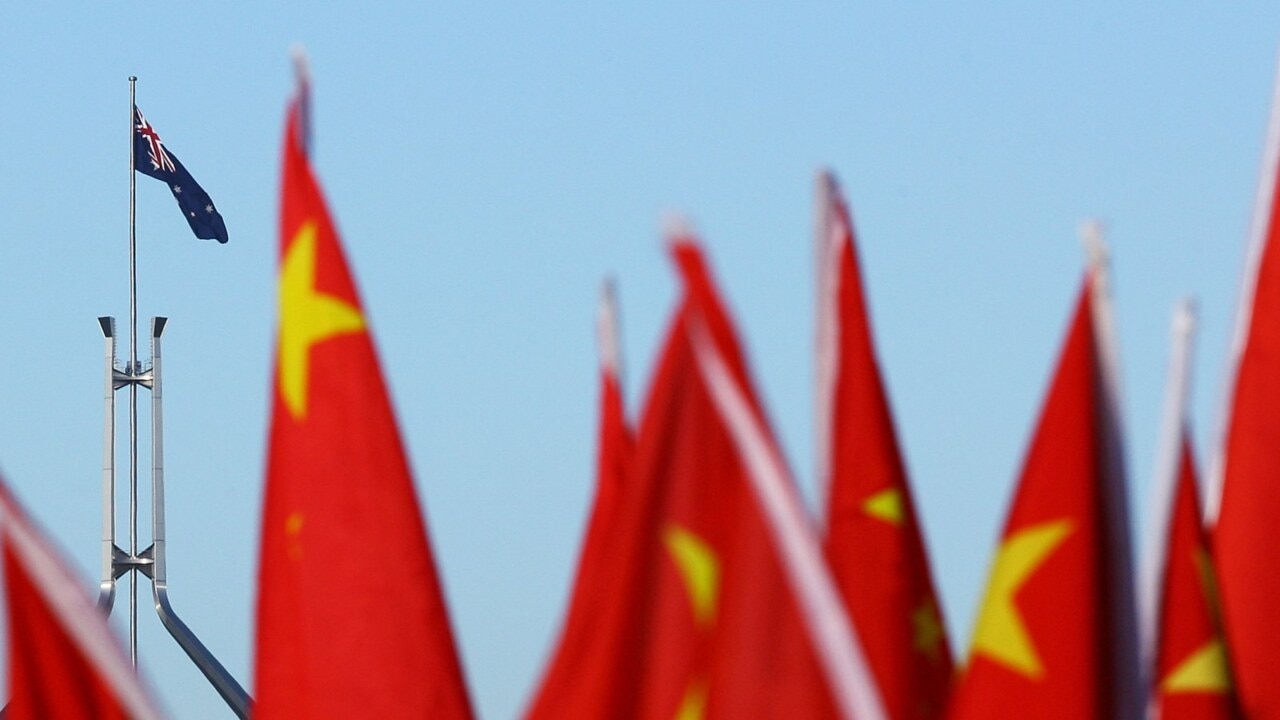How should Australia deal with an aggressive China?

The last time Australia faced the challenge of dealing with a great power adversary was the Soviet Union, more than 30 years ago. We now have no decision-makers in Australia who have had first-hand experience of dealing with an aggressive major power.
It has become fashionable to claim the Cold War was nowhere near as dangerous as the situation we face with China. It is true that today’s China poses a much more multifaceted economic and domestic political challenge to Australia than the Soviet Union did. However, it is not true that we are in a second cold war with a military threat from China comparable to that of the Soviet Union. At the peak of its power, the Soviet Union had more than 12,000 strategic nuclear warheads, whereas today’s China has about 200, according to the Pentagon. Those of us who had first-hand experience of the Cold War recall only too clearly that the chance of stumbling into a global nuclear war was very real.

Australia’s relevance in the Cold War was key to Washington’s early warning and nuclear war-fighting plans. It rested on the central role Pine Gap, Nurrungar and North West Cape played in deterring Moscow from attempting a disarming first strike on US strategic nuclear forces. The fact we hosted such facilities undoubtedly made us a Soviet nuclear target, but it also endowed us with strategic relevance in Moscow, which I experienced first-hand in the 1970s and 80s.
Apart from hosting the joint facilities, Australia mounted intensive submarine, surface warship and aerial reconnaissance operations against Soviet military forces passing through the straits of Southeast Asia and operating from its naval base at Cam Ranh Bay in Vietnam. In the South Pacific, we ensured the Soviets understood we would closely observe their intelligence collectors (for example, hydrographic research ships) and other covert activities. Our actions were designed to let the Kremlin know it could not freely operate in our strategic space. We need to do the same with Beijing.
How should Australia deal with the different range of threats from an aggressive China?
Priority should be given to knowing the adversary. In the Cold War, the error in Washington’s highly classified national intelligence estimates about the Soviet threat was that they failed to understand the weaknesses of the Soviet system.

There was a tendency to depend too much on technical means of intelligence collection and not to understand adequately just how weak the Soviet economy was. There was also an abject failure in coming to terms with how Russian history determined its view of the world. Recognising this potential intelligence gap, we need to give much higher priority to nurturing serious China experts in our intelligence and policy communities. We should be tapping into the knowledge of our multicultural society.
Until recently, defence policy in Australia judged that we would have several years’ warning of the build-up of the conventional military capabilities needed to mount a serious attack against us. However, the recent Defence Strategic Update has made it plain this is no longer the case. This means it is of vital importance that we have accurate and informed intelligence to detect adverse military developments as early as possible.

There are three phases of warning: political, strategic, and tactical. Political warning comes from the increase in tension that raises the possibility that military force may be used. This can occur rapidly in an unforeseen crisis, or can accumulate across a period of days or months. Strategic warning comes from indications the enemy is building military forces consistent with a plan to use them. Tactical warning is the detection of the initial movements of the attack itself before combat is joined.
There is every sign the increasing propensity of Beijing to use “grey zone” bullying, coercion and cyber attack may be a precursor to the actual use, or threatened use, of military power. If we fail to obtain a warning, a surprise attack occurs that catches us unprepared — with all the consequences that implies.

We must now be putting a great deal more effort in the intelligence community — and not least in the Defence Organisation — to a much closer scrutiny of detecting real-time intelligence warning indicators. We cannot afford to be caught out by a surprise attack by an adversary seeking to challenge our national sovereignty and core strategic interests.
Paul Dibb is professor of strategic studies at the Australian National University. During the Cold War he worked for the National Intelligence Committee as head of the National Assessment Staff in the 1970s and as director of the Joint Intelligence Organisation in the 80s.







The rise of an assertive China is the dominant feature of Australia’s strategic environment. The possibility of us being threatened, directly or indirectly, by a rising China can no longer be ignored.